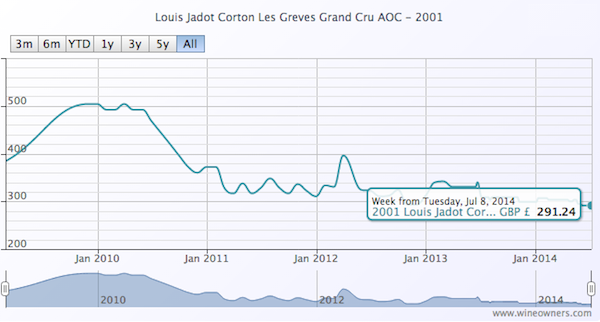by Wine Owners
Posted on 2015-09-15
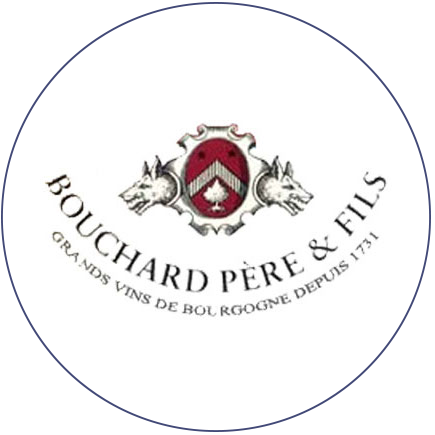 OWNER
OWNER
Bouchard Pere et Fils
APPELLATION
Chambertin Clos de Beze
BLEND
Pinot Noir
AVERAGE SCORE
96/100
CRITICS REVIEW
'A strikingly spiced and highly perfumed nose of ripe yet cool red berry fruit, wet stone, underbrush and a hint of animale merges gracefully into highly complex and gorgeously intense flavors that also brim with minerality and plenty of extract on the palate staining and stunningly long finish. This has the potential to be great in time but note carefully that it will need an ample amount of it to arrive at its full potential.'
Burghound
PRODUCER PROFILE
Founded in 1731 in Beaune by Michel Bouchard, Bouchard Père & Fils, is one of the oldest wine estates in Burgundy, perpetuating tradition for over 280 years and 9 generations. It is now the biggest domaine in the Côte d’Or, with 130 hectares of vines, of which 12 are classed Grand Cru and 74 classed as Premier Cru.
(Source: www.bouchard-pereetfils.com)
MARKET PRICE
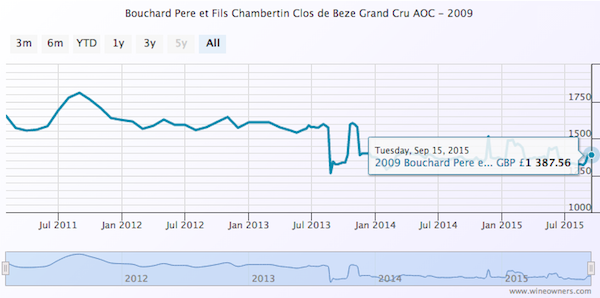
by Wine Owners
Posted on 2015-02-13
It was February 2007, and Denis was particularly excited. He’d just had a call from the American Ambassador in Paris, who was driving down to Gevrey Chambertin to taste his exceptional 2005s. If ever there was a defining moment in his gradual, understated rise to superstardom could this have been it?
Whilst every wine that Denis makes is exceptional in its classification, it is his Charmes that encapsulates the magic of his low-intervention winemaking from extremely old vines. To our taste, it is the finest of all Charmes Chambertins.
With top vintages, such as 2005 in £4,000-5,000 territory (if you can find any), 2007 looks remarkably good value at £1,575.
2007 is an earlier drinking vintage – but with a velvety density that delivers a sensation of lusciousness over the underlying soft tannins. Think of 2000 but with greater density and finesse. The fruit is still primary and will take a year or so yet for the secondary elements to show and express themselves. It should be at its peak around 2016-2020.
His wines are at complete ease in their metaphorical skins. Perfectly weighted, allied to a fine intensity and directness. There are no disappointing vintages here, just wines to drink a little earlier than others.
In a recent comparative tasting of 1999 and 2001 vintages alongside Armand Rousseau’s Charmes, Denis’s simply blew them away. 2002 Charmes also showed its class more recently in the same company as grand crus of the same vintage from Roumier, Rousseau and Ponsot.
Last year, a few of us attended a Charmes dinner, attended and written up by arguably the finest burgundy critic of his generation, Neal Martin, in The Hedonist’s Gazette.
Here are his summary scores:
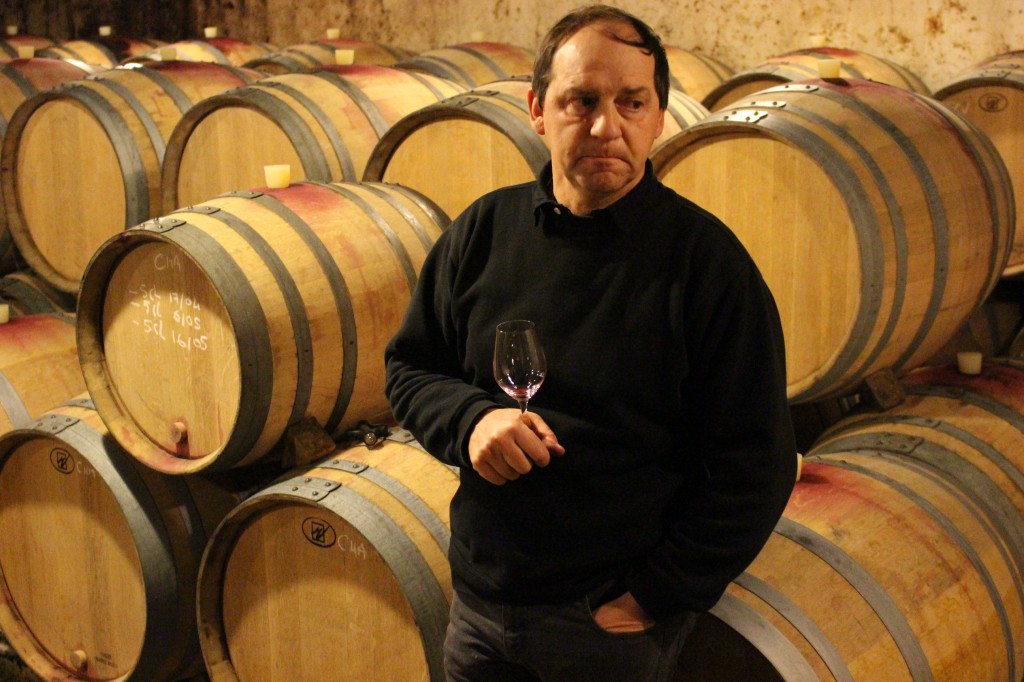
by Wine Owners
Posted on 2014-07-08
If a wine is from a first class vintage (serially dubbed ‘the vintage of the century’) and has scored a perfect or near perfect score, surely that wine is likely to give the greatest thrill; after all it’s considered the best that there is.
Or is it? If pleasure is what you're after, pulling a cork on highly–rated wine may be the most disappointing choice, especially if it’s from a relatively recent vintage.
Take the example of 1996 classed growth Medocs. Pontet Canet 1996 has impressive depth and purity that is currently held in check by a slowly receding tannic frame and enduringly fresh acidity. But one day it will surely be a very great wine.
Wines from so-called ‘off vintages’ (also known as restaurant vintages, shoulder vintages, an overshadowed by …. vintage) may give far superior current pleasure than its more illustrious, fêted siblings. Sticking with the Pontet Canet example, take your pick from 2002, 2004 or 2006 for wines which today deliver greater visceral pleasure; whether you favour Asian spiced, sweetly grained or delineated and pure fruit.
Switching to burgundy, surely great pinot noir doesn’t require the long wait of the finest red Bordeaux? Not so. Anyone who’s tasted the very best that 1999 has to offer will know how un-evolved, fruity and dense those wines still are. Sure, they impress with their texture and depth, but at the dinner table can disappoint with their primary-ness.
That peacock’s tail array of scent and flavour will one day burst out of the glass, seducing and beguiling the drinker. But today these wines merely provide waypoints to their future destination.
By contrast, the under-appreciated burgundy vintages of 1997, 1998 and 2000 provide some incredibly succulent current drinking, including Engel’s Vosne-Romanée Brûlées 1997, Ghislaine Barthod’s Chambolle-Musigny Les Cras 1998 and Denis Mortet’s Gevrey-Chambertin Champeaux 2000. There are countless others to pick from.
Thinking of arguably the greatest modern-era Italian, Roberto Conterno’s Monfortino, how can one compare the delicate 2002 with the blockbusting 1999? 2002 was a year in which most of sodden Piedmont suffered badly. Yet here is a sweet, perfectly poised wine showing soft red fruits and noble length. In contrast the 1999 is stunningly defined and intense, and a future monument for 10-20 years hence. But I’ll drink the 2002 now in preference.
What good is a cellar full of great vintages if you end up broaching so many of them in their infancy? Raise a glass for under-appreciated vintages. So often they will surprise and delight you, and may even win your best wines of the year awards!
Looking for ideas?
Leoville Barton 2002 - £450 (12x75cl) including duty and VAT
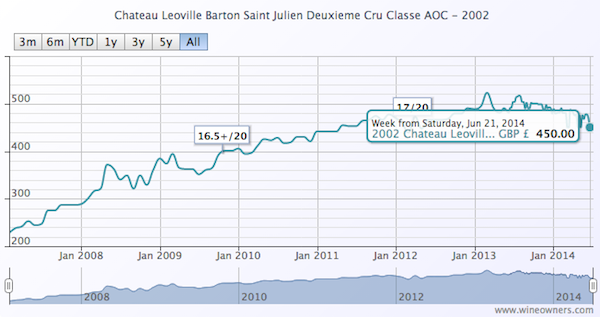
Montrose 2002 - £550 (12x75cl) ) including duty and VAT
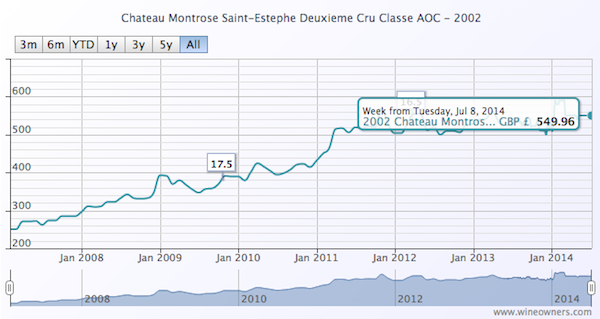
Malescot St. Exupery 2004 - £350 (12x75cl) In Bond
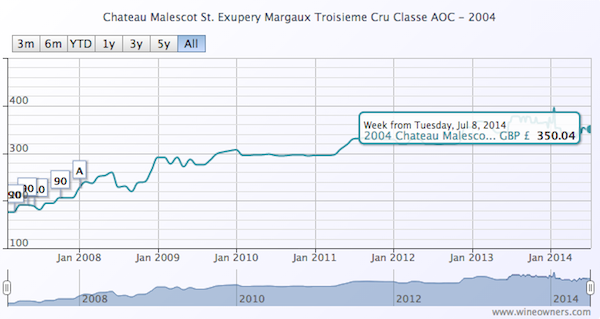
Louis Jadot Corton Les Greves Grand Cru 2001 - £150 (6x75cl) In Bond.
